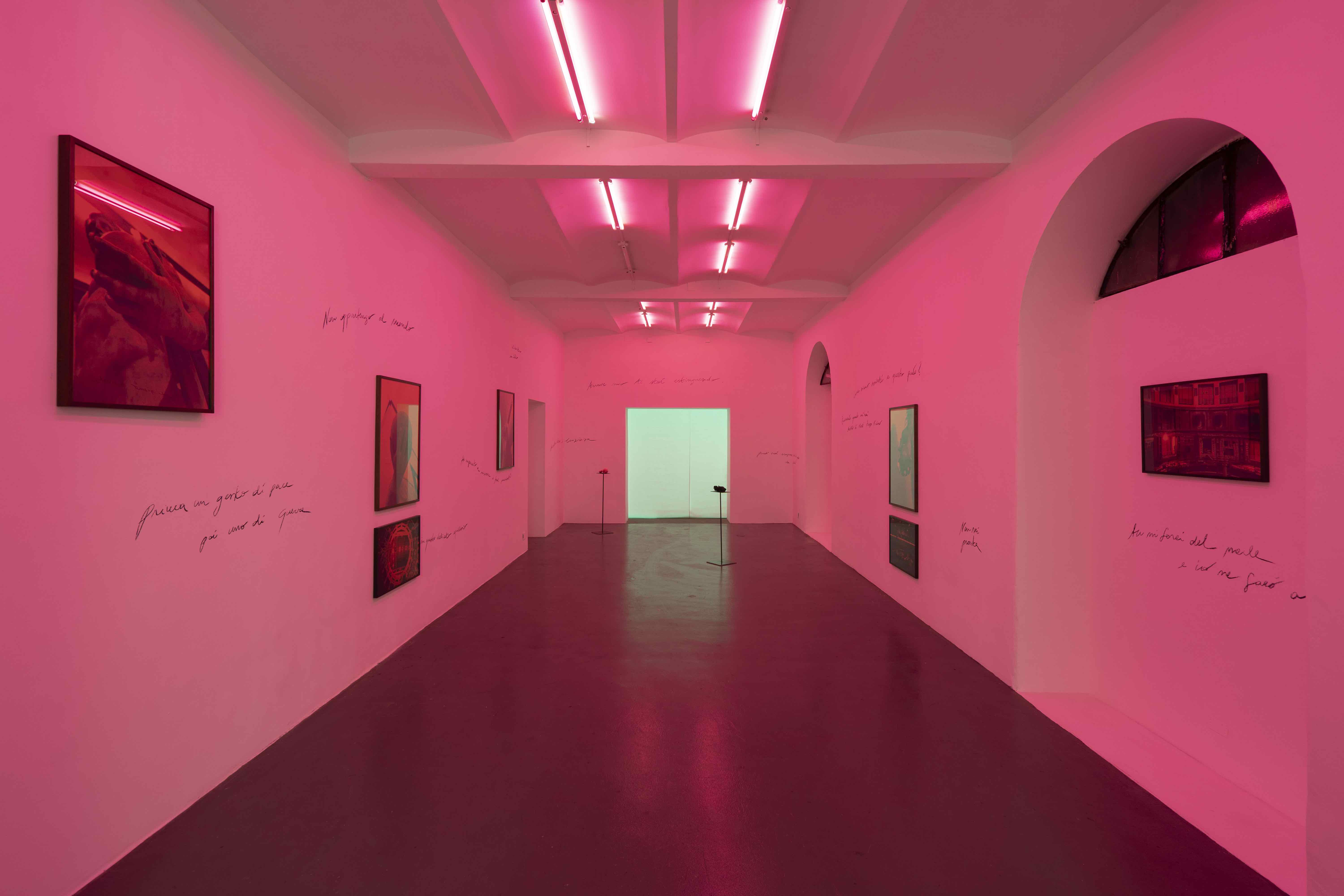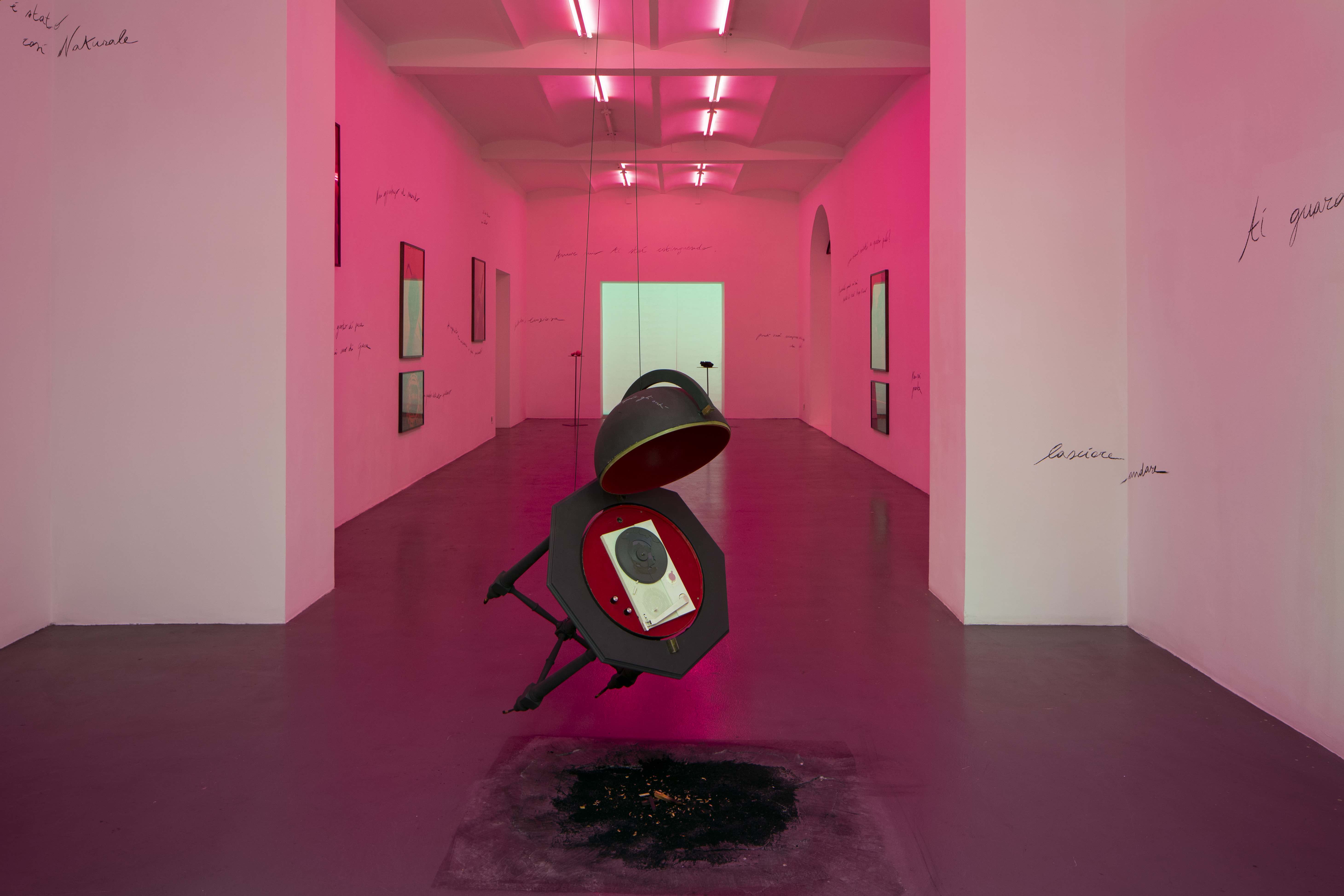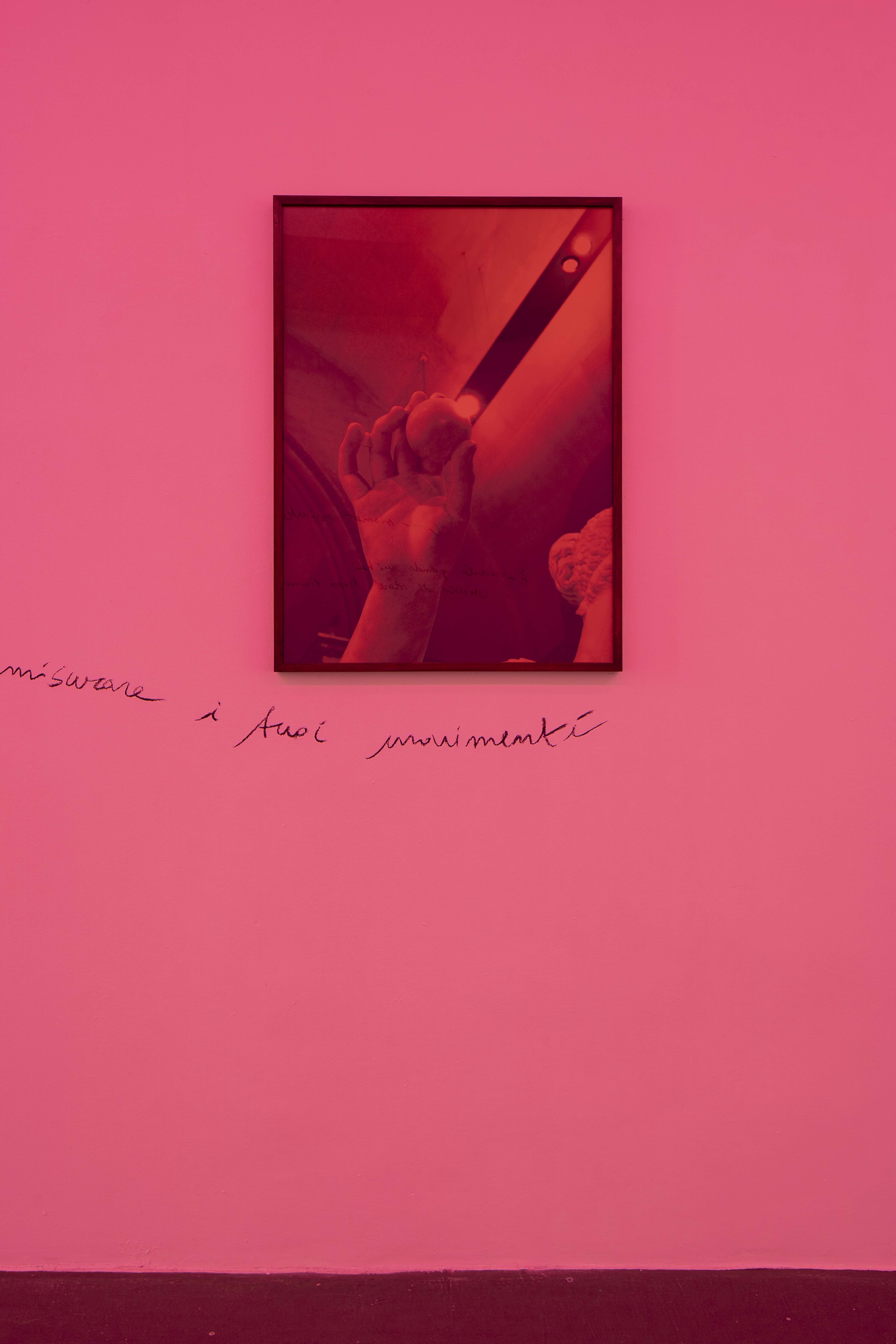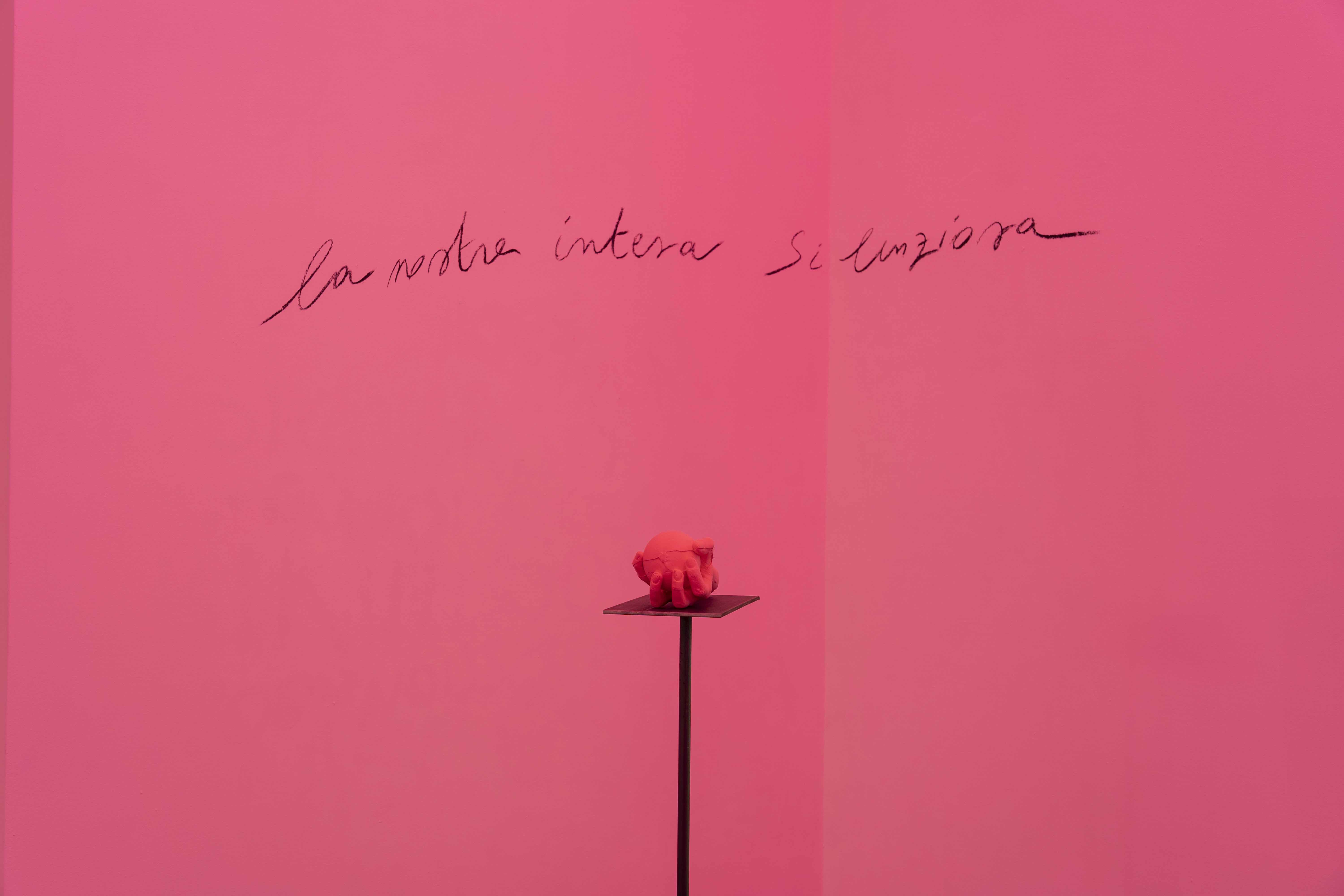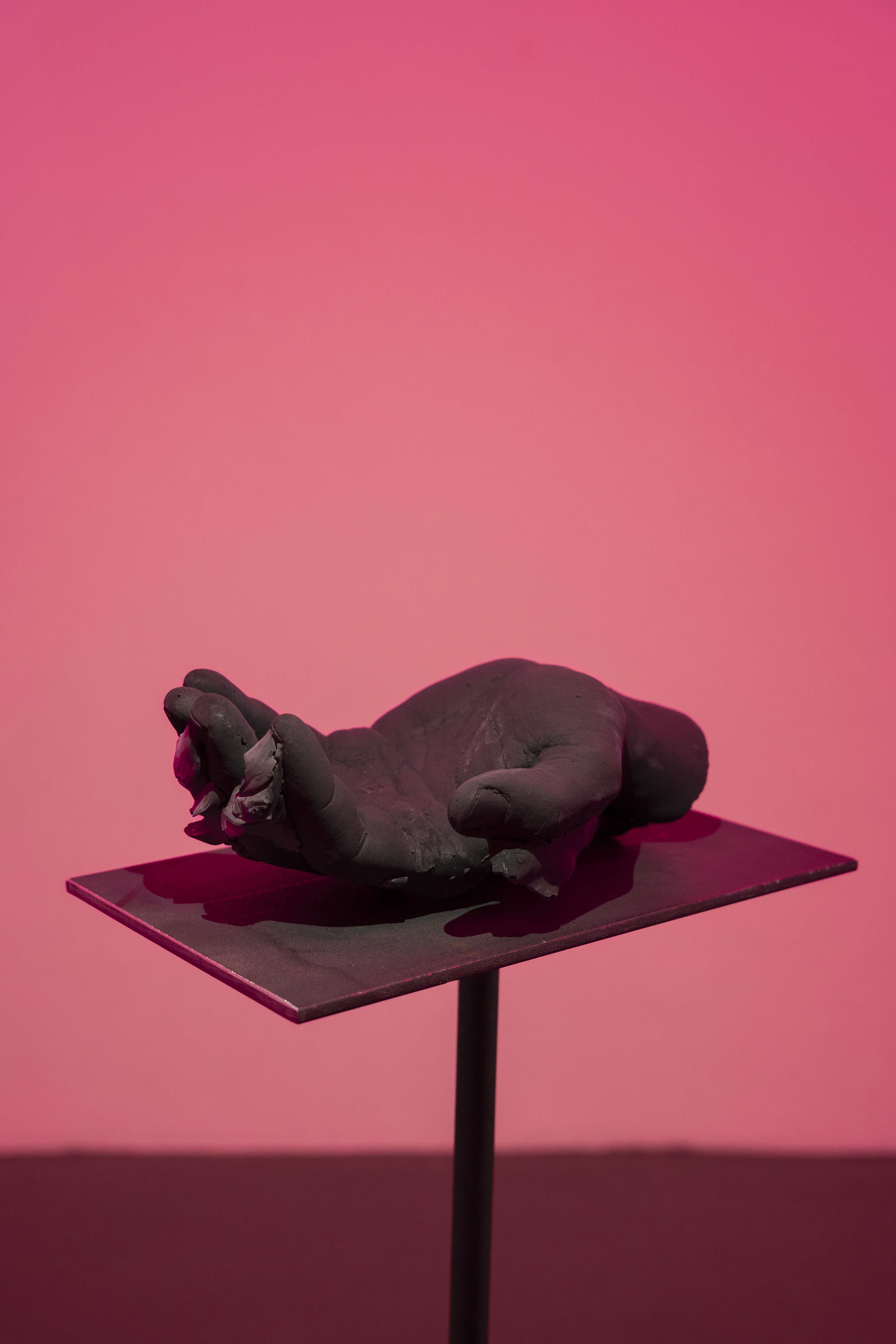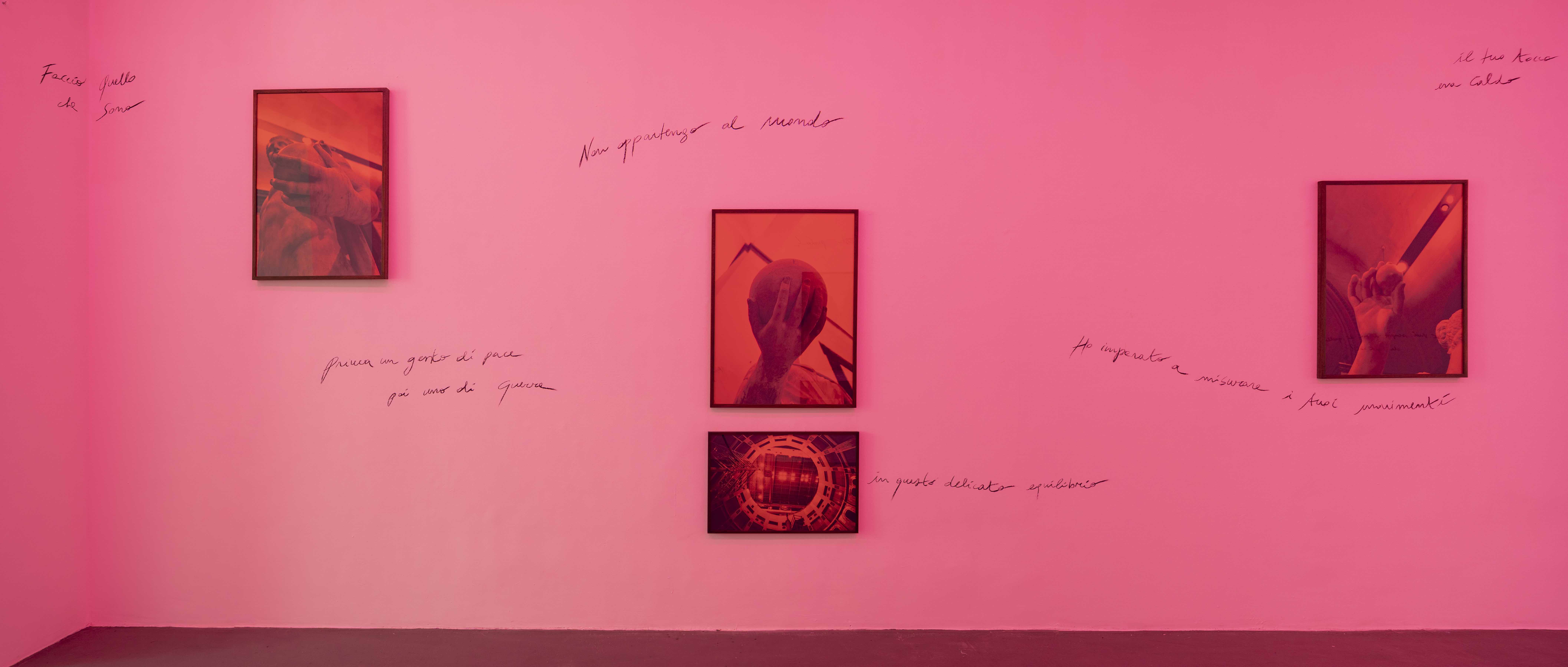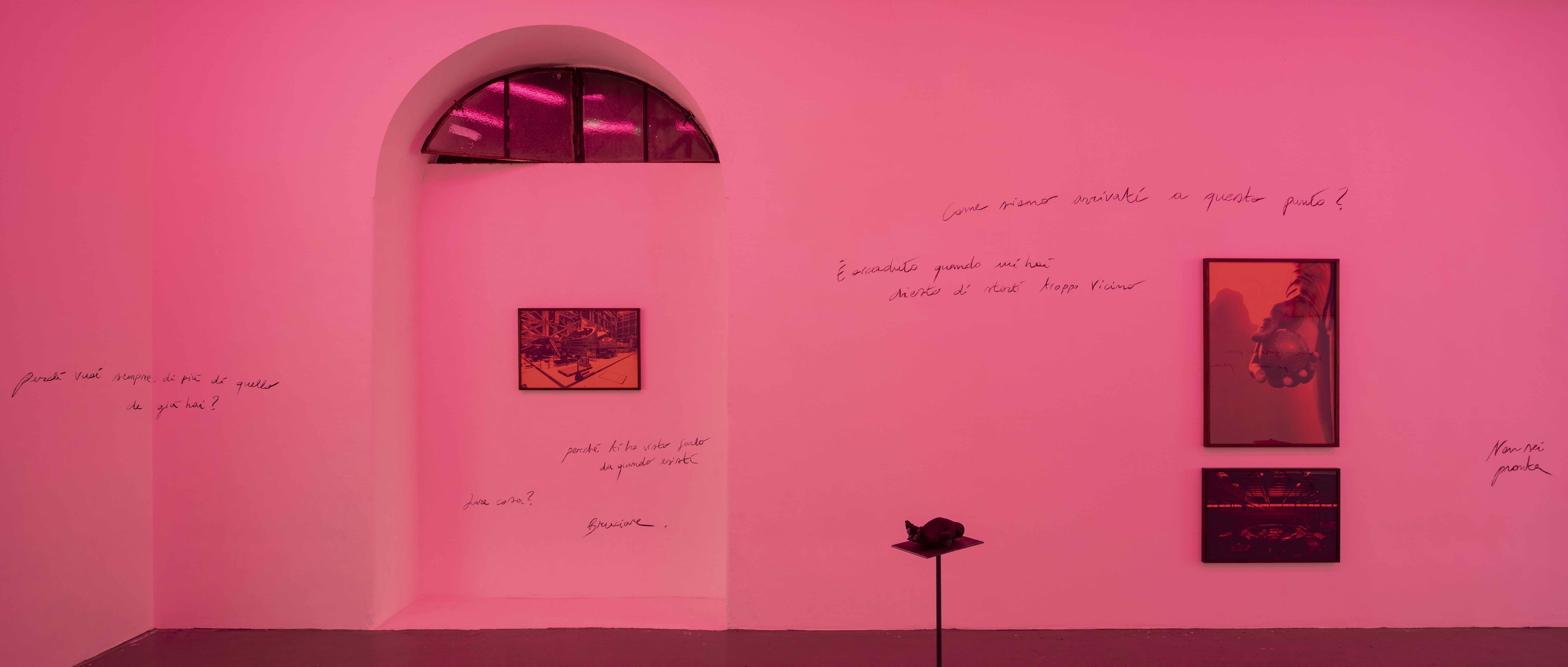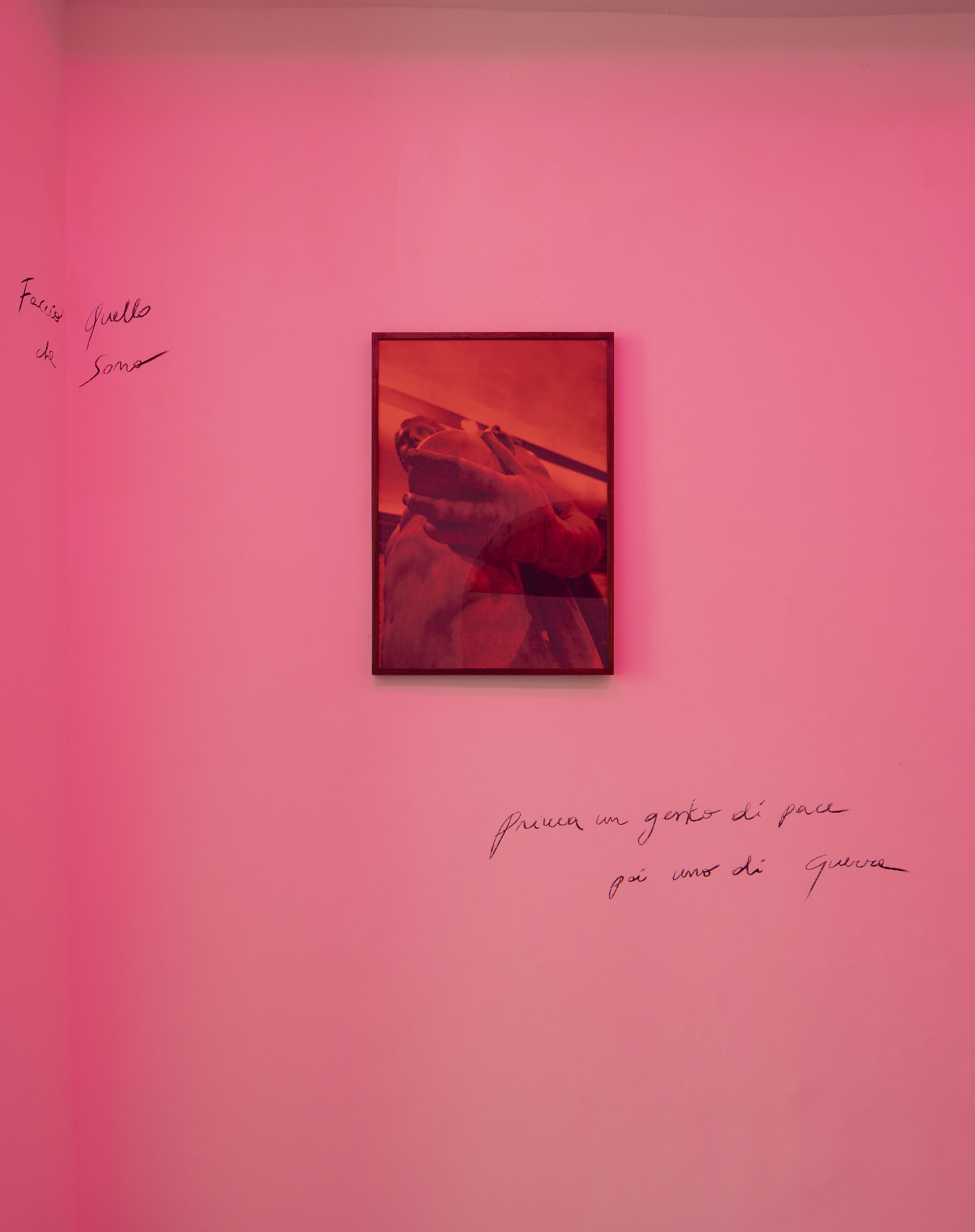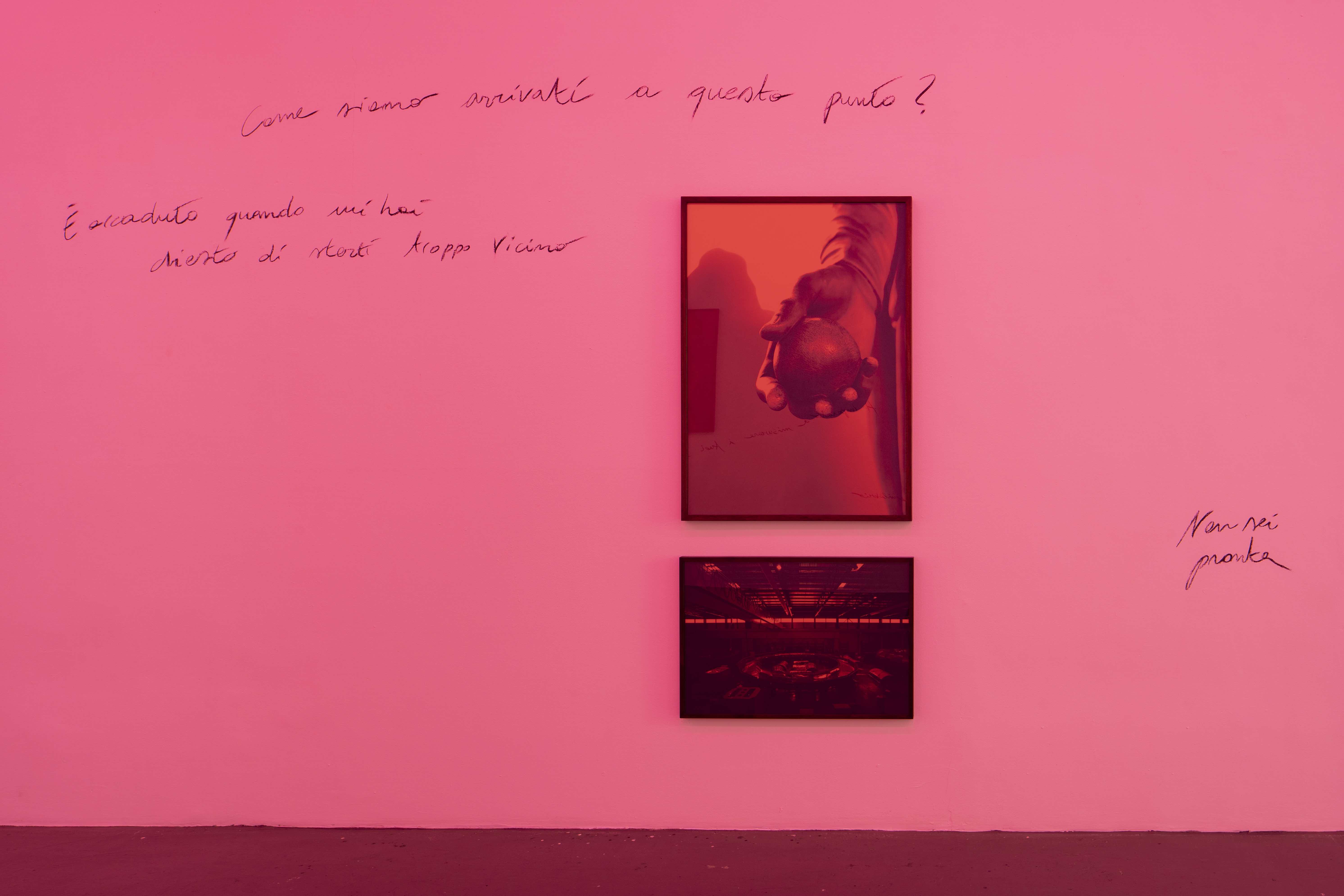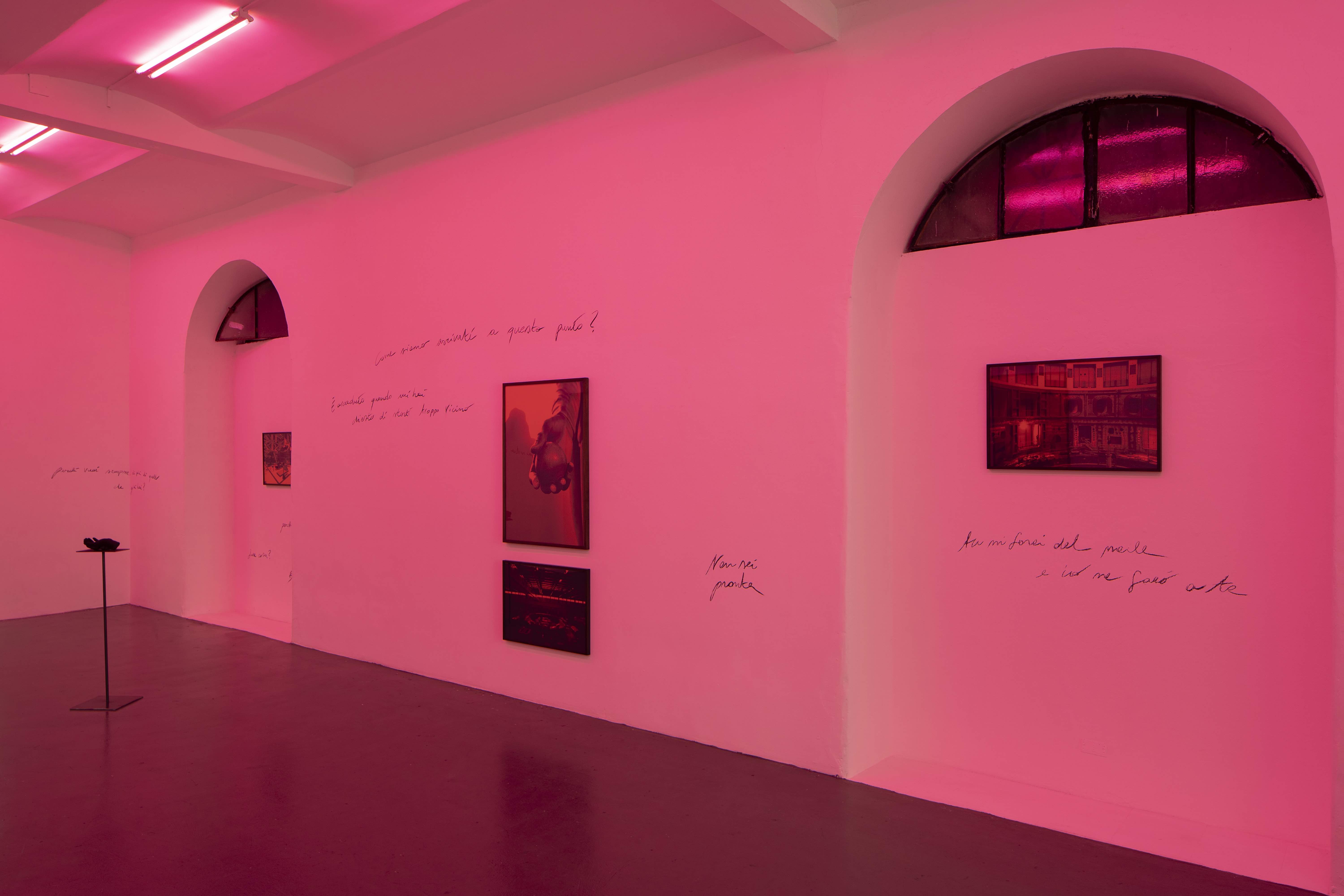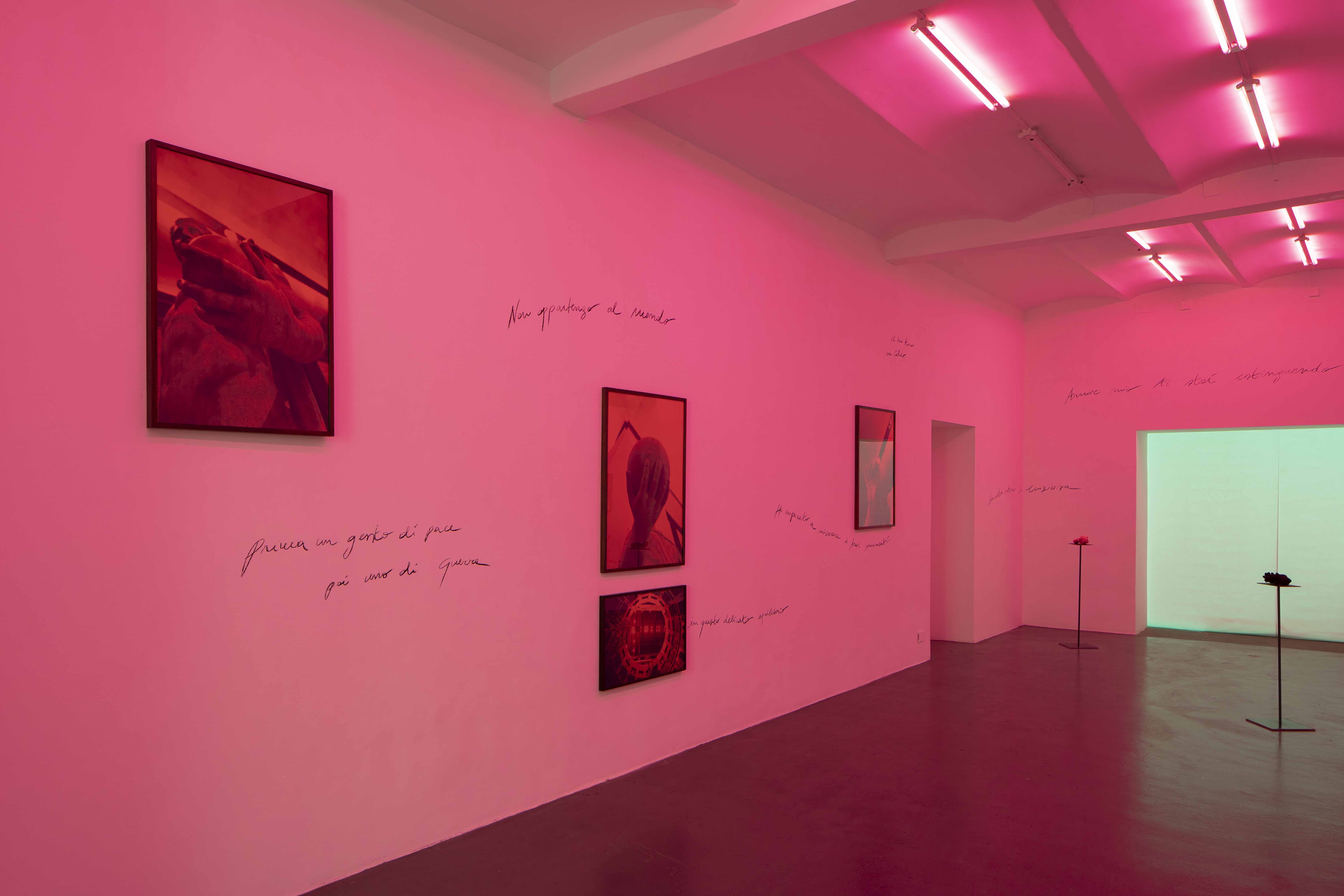VOLEVO IL SOLE _ I WANTED THE SUNGallery PostmastersROMA
ph_giulianodelgatto
Volevo il sole, è una mostra immersiva che svela le dinamiche del Potere applicato alla tecnologia e alla scienza, sotto forma di storia d’amore tra il Sole e La Terra (intesa anche come umanità).
Come per una pièce teatrale quest’opera romantica in tre atti è accompagnata da un libretto che riporta il dialogo in tre fasi tra i due amanti. Questo dialogo nasce per essere performato da sue attori che interagiscano anche con le opere in mostra, specialmente con l’installazione cinetica-rituale.
L’idea del lavoro si ispira all’esperimento ITER, la creazione di un sole sulla terra che sta avvenendo in Francia in questo momento.
Ispirata da questo gesto così impossibile prendere il sole nella propria mano e portarlo sulla terra che è 1,3 milioni di volte più piccola… la mostra si articola sull’impossibilità dei grandi amori che bruciano velocemente paragonandola all’impossibilità dell’uomo di gestire, modificare le regole della natura, le regole dei cieli, degli universi, degli equilibri tra i corpi celesti.
L’artista immagina lo spettatore entrare dentro un ambiente modificato, uno spazio color magenta. Magenta è il colore che non esiste, che non appartiene allo spettro visibile ma che il nostro cervello inventa per correggere questo nostro limite di visione.
Nell’immergersi nel magenta dello spazio espositivo, lo spettatore si trova a scoprire sulle pareti delle scritte in carbone (elemento residuo di qualcosa che è bruciata); frasi con la calligrafia dell’artista, raccontano il dialogo in tre atti tra questi due innamorati. All’inizio lo spettatore ignora chi siano i protagonisti e solo alla fine lo scoprirà non essere umani ma, personificazioni dei due corpi celesti.
Le frasi sono scritte in carbone e in modo randomico per tutta la galleria e collegano tra le fotografie, le sculture e l’installazione.
Gli scatti mostrano le mani di diverse sculture che l’artista ha scovato nei musei del Louvre, Vaticani, Napoli, dove le divinità greche sorreggono con eleganza e equilibrio i corpi celesti. Accanto, sotto o di fronte altrettante foto color magenta mostrano l’interno dell’esperimento del sole artificiale, una visione anatomica del cuore stesso di cui è fatto.
Questo dialogo poetico, in tre atti, sembra divenire più chiaro quando lo spettatore scorge due sculture, una in gesso magenta l’altra in carbone. Quella magenta, è la mano del potere che emula il gesto della divinità, si finge essa ne cambia la stretta afferrando e stringendo la sfera. L’altra è nera ma con un gesto di apertura, è la mano dello scienziato che ha lasciato andare, che libera, riscatta, diventa saggia una mano che mostra una possibilità d’amore che non sempre è quella più semplice, lasciarsi bruciare.
Infine “ho aperto gli occhi” ultimo atto della pièce: un’installazione cinetica dove dispositivo rituale a cavallo tra un mappamondo nero ardesia o un satellite spaziale, sospeso da terra che orbita con un giradischi all’interno; ogni 15 minuti, suona nello spazio frammenti della canzone italiana “il mondo” di Jimmy Fontana, remixata con la profonda e inquietante registrazione fatta dall’ESA (European Space Agency) del campo magnetico generato dal nucleo della Terra che incontra quello del Sole. I due cuori nell’ultimo atto del dialogo amoroso.
I Wanted the Sun (PostmastersROMA Gallery) is an immersive exhibition that reveals the dynamics of Power applied to technology and science in the form of a love story between the Sun and The Earth (also understood as humanity).
As with a play, this three-act romantic work is accompanied by a small book featuring the three-step dialogue between the two lovers. This dialogue was created to be performed by its actors who also interact with the works on display, especially with the kinetic-ritual installation.
The idea for the work is inspired by the ITER experiment, the creation of a sun on earth that is happening in France right now.
Inspired by this oh-so-impossible act of taking the sun in one's hand and bringing it to the earth which is 1.3 million times smaller... the exhibition is articulated on the impossibility of great loves burning fast comparing it to the impossibility of man to manage, to change the rules of nature, the rules of the heavens, the universes, the balances between celestial bodies.
The artist imagines the viewer entering a modified environment, a magenta-colored space. Magenta is the color that does not exist, that does not belong to the visible spectrum but that our brain invents to correct this limitation of our vision.
In plunging into the magenta of the exhibition space, the viewer finds himself discovering charcoal lettering (a residual element of something that has burned) on the walls; phrases in the artist's handwriting, telling the three-act dialogue between these two lovers. At first the viewer is unaware of who the protagonists are and only at the end will find out they are not human but, personifications of the two heavenly bodies.
The phrases are written in carbine and randomly throughout the gallery and connect between the photographs, the sculptures and the installation.
The shots show the hands of various sculptures the artist has scouted in the Louvre, Vatican, and Naples museums, where Greek gods elegantly and poisedly support celestial bodies. Alongside, below or opposite as many magenta-colored photos show the inside of the artificial sun experiment, an anatomical view of the very heart of which it is made.
This poetic dialogue, in three acts, seems to become clearer when the viewer glimpses two sculptures, one in magenta plaster the other in charcoal. The magenta one, is the hand of power emulating the gesture of divinity, it pretends it changes its grip by grasping and squeezing the sphere. The other one is black but with an opening gesture, it is the hand of the scientist who has let go, who frees, redeems, becomes wise a hand that shows a possibility of love that is not always the easiest one, to let oneself burn.
Finally “I open my eyes" last act of the play: a kinetic installation where ritual device straddles a slate black globe or a space satellite, suspended from the earth orbiting with a turntable inside; every 15 minutes, it plays in space fragments of the Italian song "il mondo" by Jimmy Fontana, remixxed with the deep and eerie recording made by ESA (european space agency) of the magnetic field generated by the Earth's core meeting that of the Sun. The two hearts in the last act of the love dialogue.
©federicadicarlo.all rights reserved.2023
